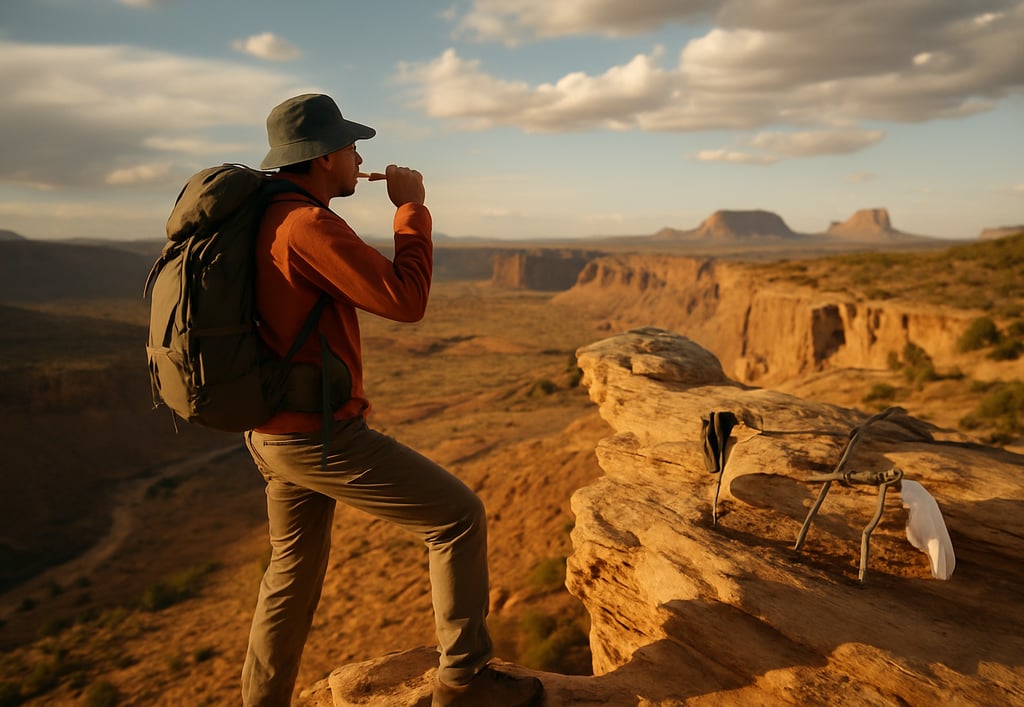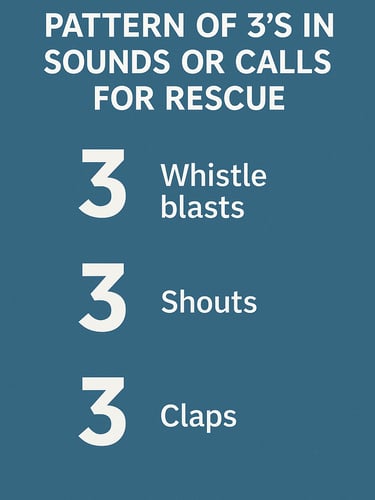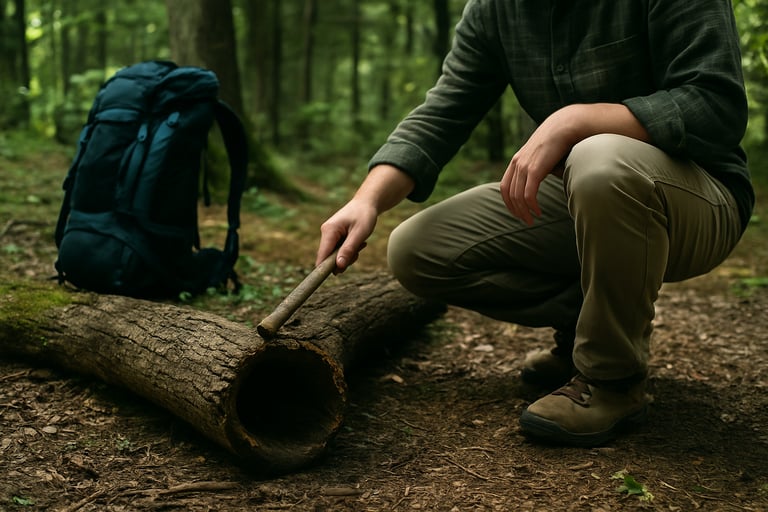Using Auditory Signals to Call for Rescue: Whistles, Shouts, and Sound-Based Survival Techniques
Learn how to use sound-based rescue signals like whistles, shouts, and tapping to increase your chances of being found. Discover the best auditory survival signals, how to use them, and why the “pattern of three” can make all the difference.


Using Auditory Signals to Call for Rescue: Whistles, Shouts, and Sound-Based Survival Techniques
Why Sound Can Be a Lifesaver in the Wilderness
When you're lost or in distress in the backcountry, your voice may be your first survival tool. Sound carries farther than many people think, especially when there’s no line of sight. Whether it’s yelling, banging on objects, or using a whistle, making noise can be one of the simplest and most effective ways to get help. In situations where visual signals might be blocked by terrain, trees, or weather, auditory rescue signals can cut through those barriers. Let’s explore how to use them properly.
The “Pattern of Three”: Universal Sound Signal for Help
One of the most important things to know when using sound for survival is the "pattern of three." For a break down on how the “pattern of three” applies across light, sound, and visual signals, check out our guide to wilderness communication. In the world of wilderness rescue, three of anything — three whistles, three shouts, three bangs — is recognized internationally as a distress signal. Pause for a few seconds between each burst to help rescuers pinpoint your location. Then repeat. This simple pattern is understood across different countries and agencies, making it a reliable call for help no matter where you are.
Using a Whistle for Rescue Signaling
A whistle is one of the most important items to keep in your emergency kit or clipped to your backpack strap. Unlike your voice, a whistle doesn't get tired, and it produces a sharper, higher-pitched sound that carries much farther in dense forests or valleys. Rescue experts recommend three short blasts as the standard emergency whistle signal. It’s also a good idea to test how far the sound carries in different terrain before you’re in an actual emergency.
Other Sound-Based Methods: Shouting, Tapping, and Improvising
If you don’t have a whistle, your voice is the next best tool. Yelling “help” clearly and at regular intervals might attract attention from a passing hiker or search party. You can also bang rocks together or tap rhythmically on hollow logs to create distinct, attention-grabbing noise. Like with all auditory signals, repetition and rhythm are key. A consistent pattern makes it easier for human ears to distinguish the signal from natural background noise.
When and Where to Use Auditory Rescue Signals
Auditory signals work best when you believe rescuers might be nearby but can’t see you. Early morning and dusk are ideal times, as sound carries better in cooler, denser air. If you're in a canyon, valley, or near water, your signal may echo and reach even farther. That said, avoid wasting energy. Use your whistle or voice periodically, especially when you hear voices in the distance. Then stop, listen, and repeat. Knowing when to stay calm and conserve energy is just as important as knowing when to signal.
Final Thoughts: Make Sound Part of Your Survival Strategy
In an emergency, you want to be heard just as much as you want to be seen. Always carry a whistle as part of your essential gear. Learn and use the pattern of three, and understand how sound behaves in nature. Whether you're hiking solo or exploring remote terrain, auditory rescue signals are a simple, lightweight, and highly effective way to boost your chances of getting rescued.
Let your voice — and your whistle — be your backup when visibility fails.




© 2025. All rights reserved About | Privacy Policy | Terms and Conditions | Affiliate Disclosure | Disclaimer


